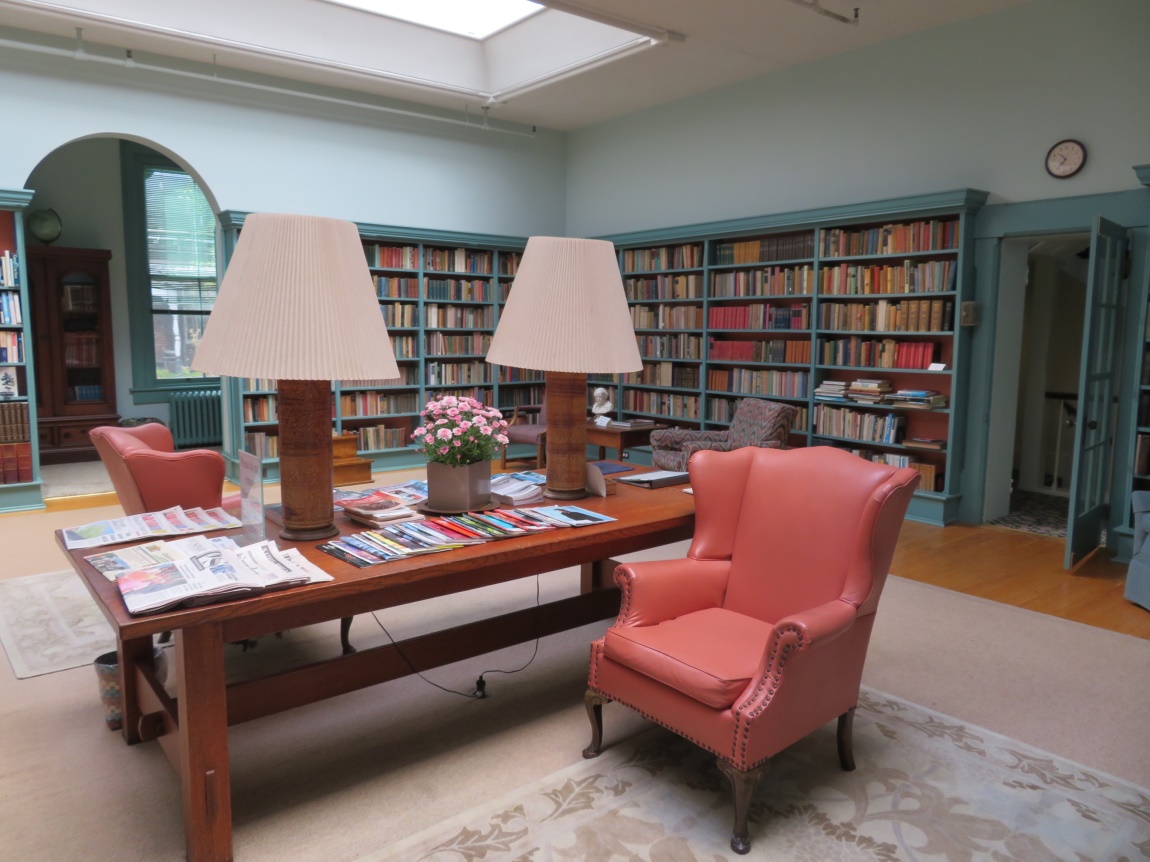
The upper sitting room.
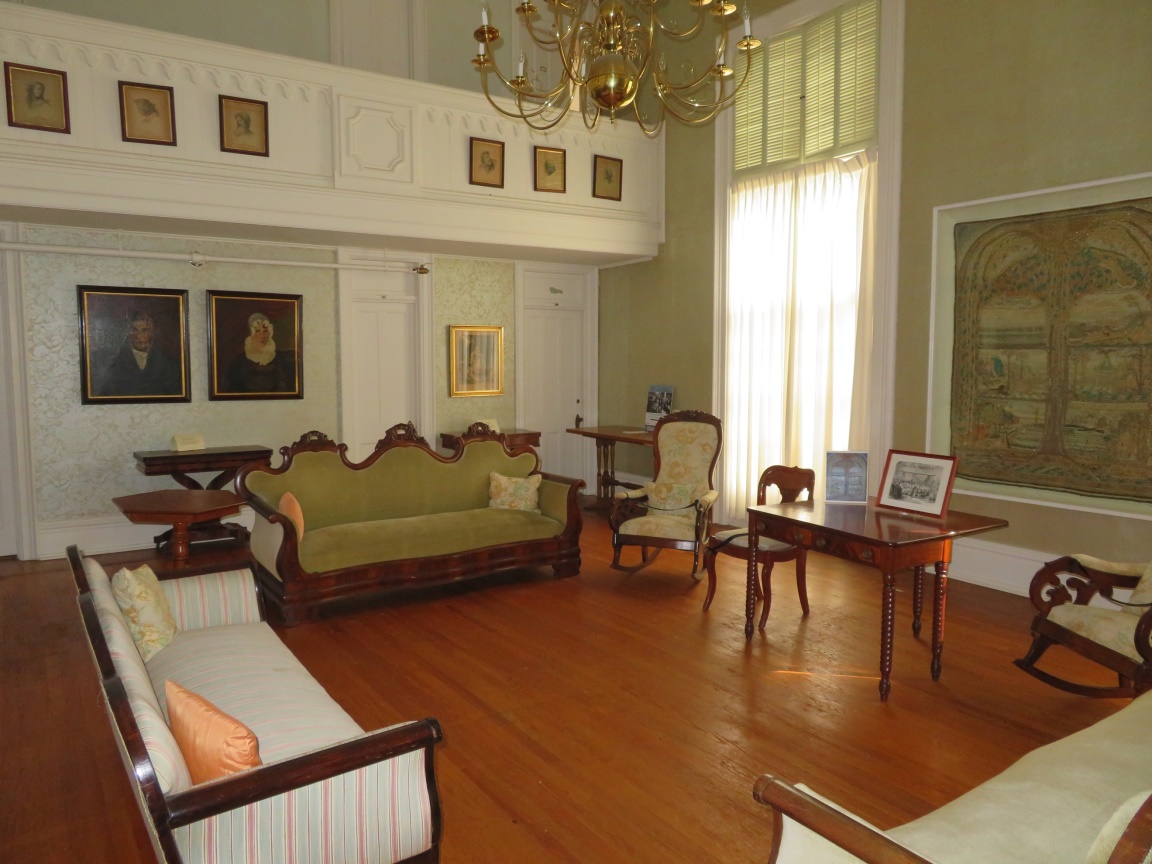
Another room held curios, which were presented in glass displays, filled with items that once belonged to the residents. When one joined the Oneida community, they gave over all their money and worldly possessions. If one left, they could take their personal items and treasures, but a percentage of their items had to remain in compensation for the person staying there. The bedrooms were small and only had a single bed. Couples were encouraged to not sleep together unless permission was approved to have children. If couples began to attach, it was frowned upon and considered “sticky”.
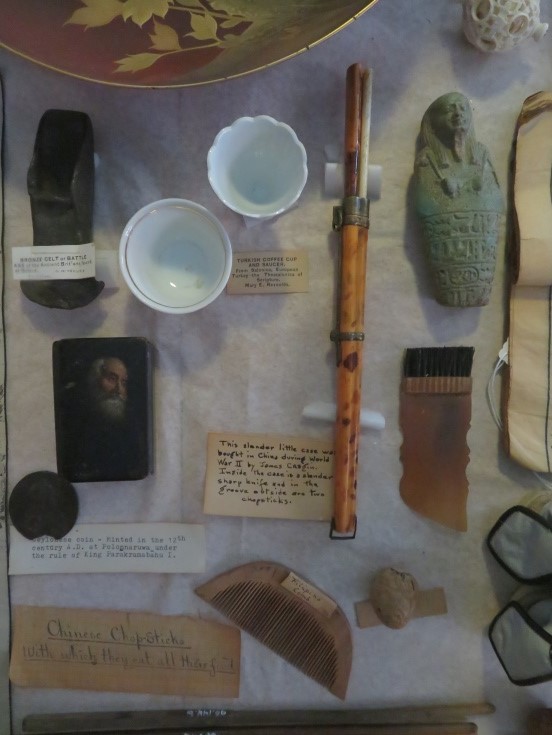
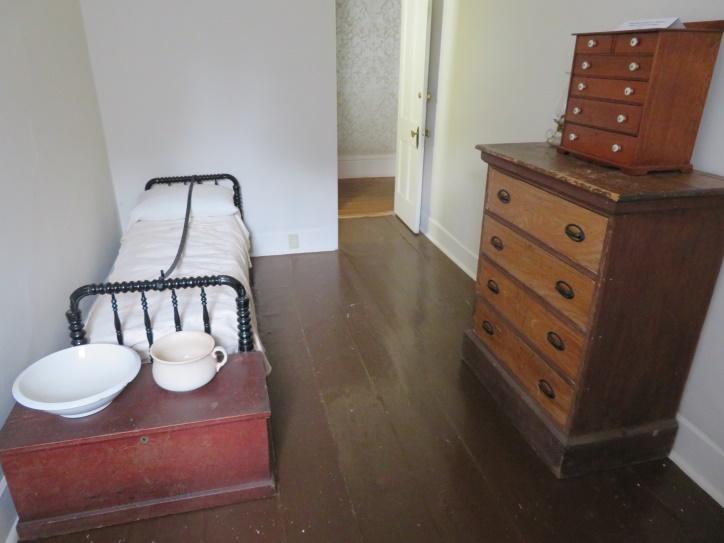
The most impressive room was the very large two-story theater with full stage.
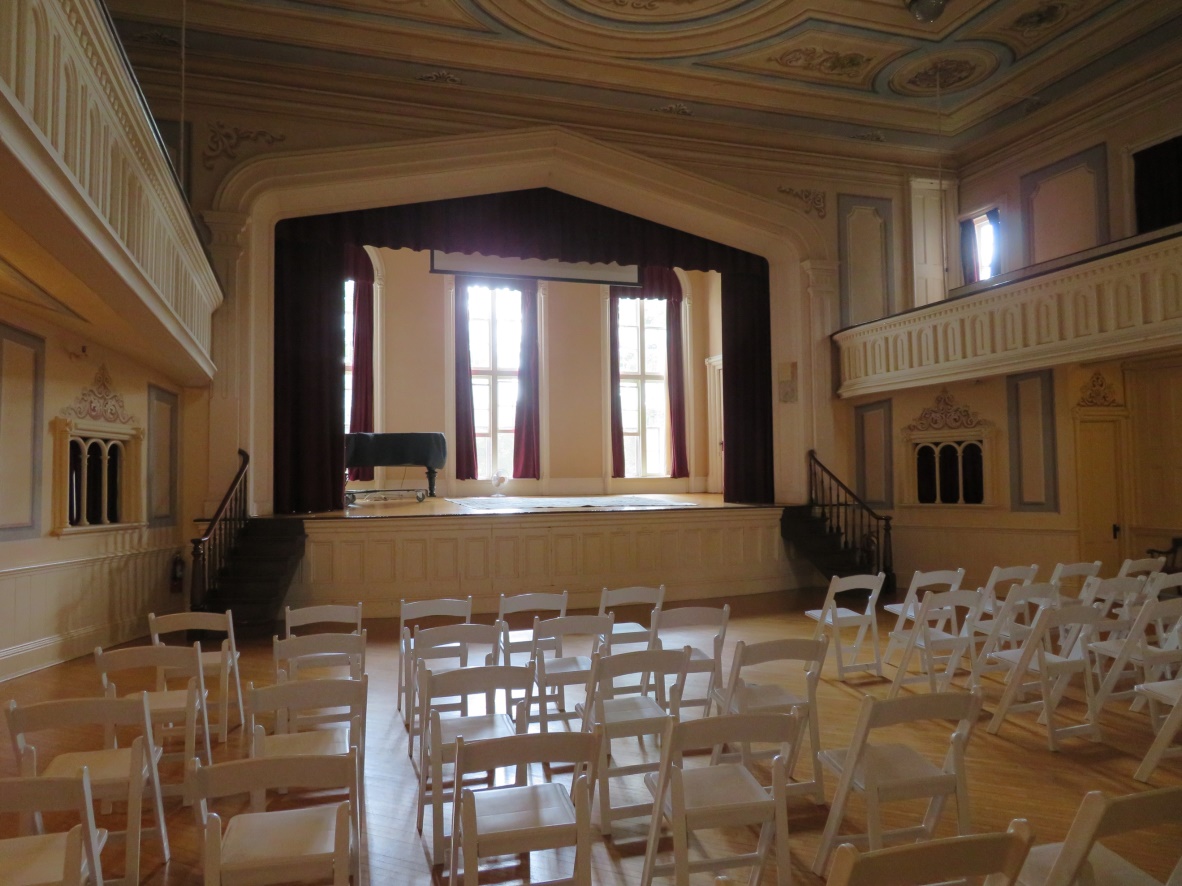
When the Oneida community began making silverware, and then the war began, posters encouraged support of the troops and investing in the future, with of course, silver.
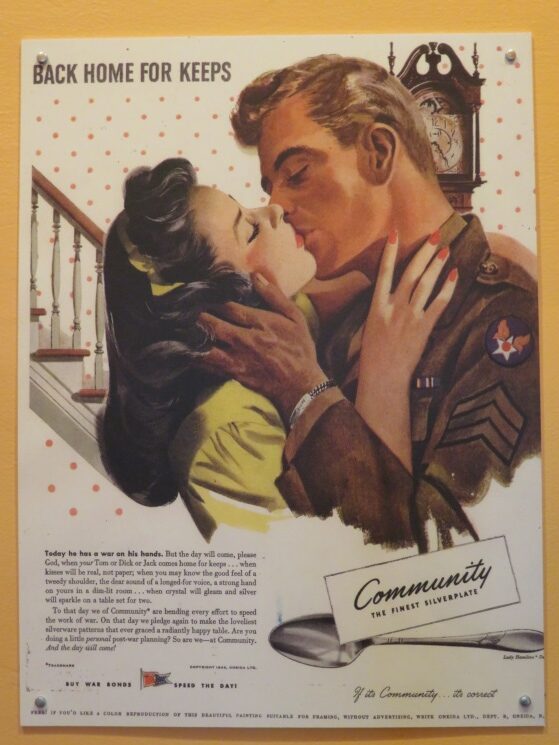
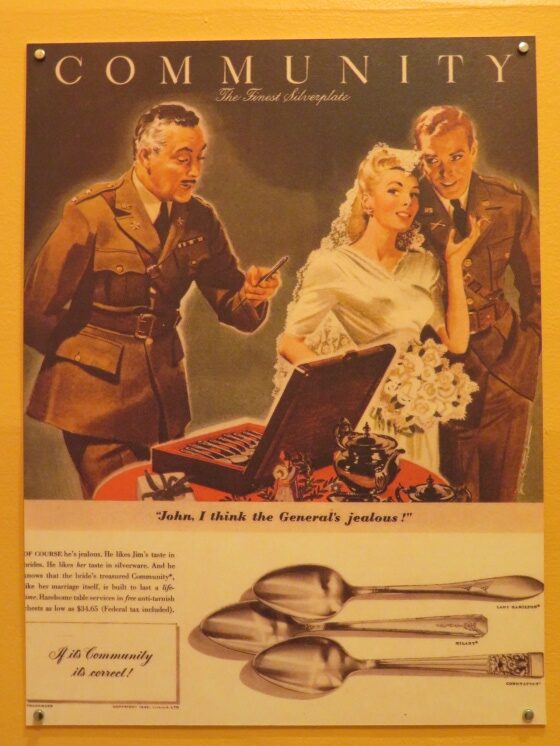
Although it was raining off and on while we were there, we were able to see some of the lawns and gardens on the property’s thirty-three acres. A trail map is available that one can use to self-guide and see the south garden with its tulip trees and the one-hundred foot tall black walnut tree, the north garden, knot garden, vineyard, orchard, summer house, pergola, cemetery, log cabin, and Sunset Lake.

We were told that the people who live in Oneida are a very tight-knit group, many of whom had ancestors who once were part of the Oneida community. In fact, two upper floor rooms are still occupied by inherited members. A community journal is available that offers many articles on life of the Oneida’s, which was begun in 1987. It has published thirty-three issues, the latest available is their Fall 2021, Vol 36, No. 2 issue. And if one is intrigued in the specifics of the architecture of the Oneida building, an article published by the American Communal Societies Quarterly, Vol. 12, No. 1, by Kevin Coffee, may be of interest.
We were glad that we had stayed there and were impressed by the industriousness at which the community strove to make a living, outside the usual social norms of the time, and how the grounds and building continue to exist.
 The official website of Lita-Luise Chappell, writer on sex, magic, food, distant lands, and everyday life with articles, poetry, novels, travelogues, rituals, cookbooks, and short-stories.
The official website of Lita-Luise Chappell, writer on sex, magic, food, distant lands, and everyday life with articles, poetry, novels, travelogues, rituals, cookbooks, and short-stories.
